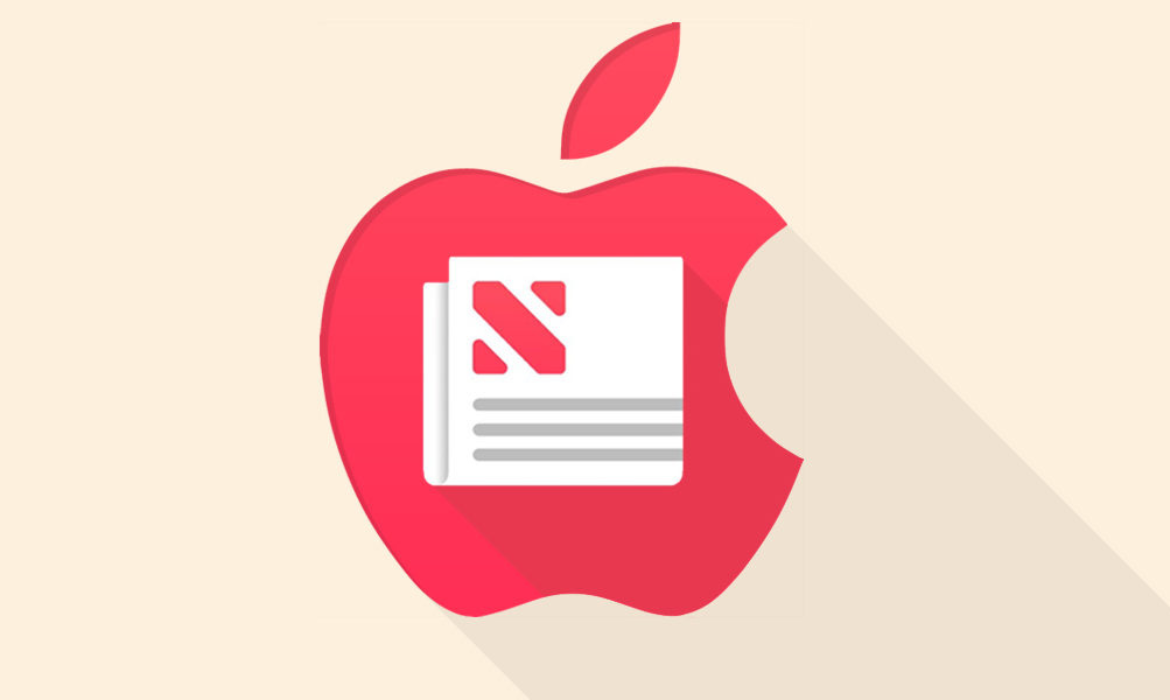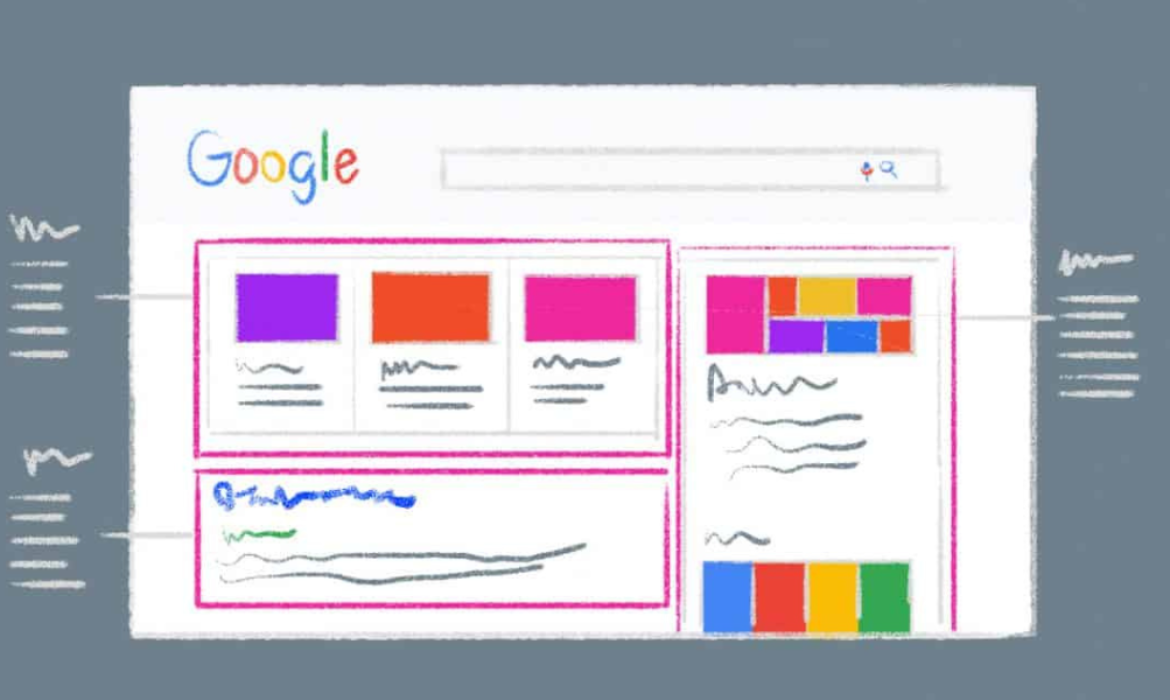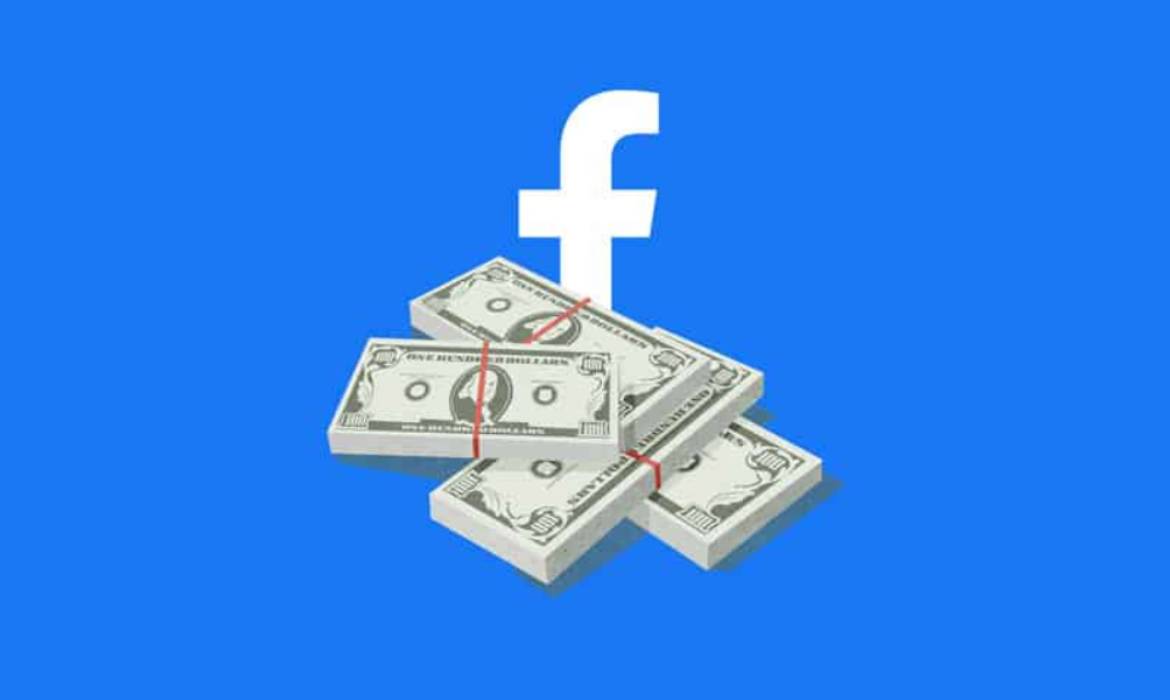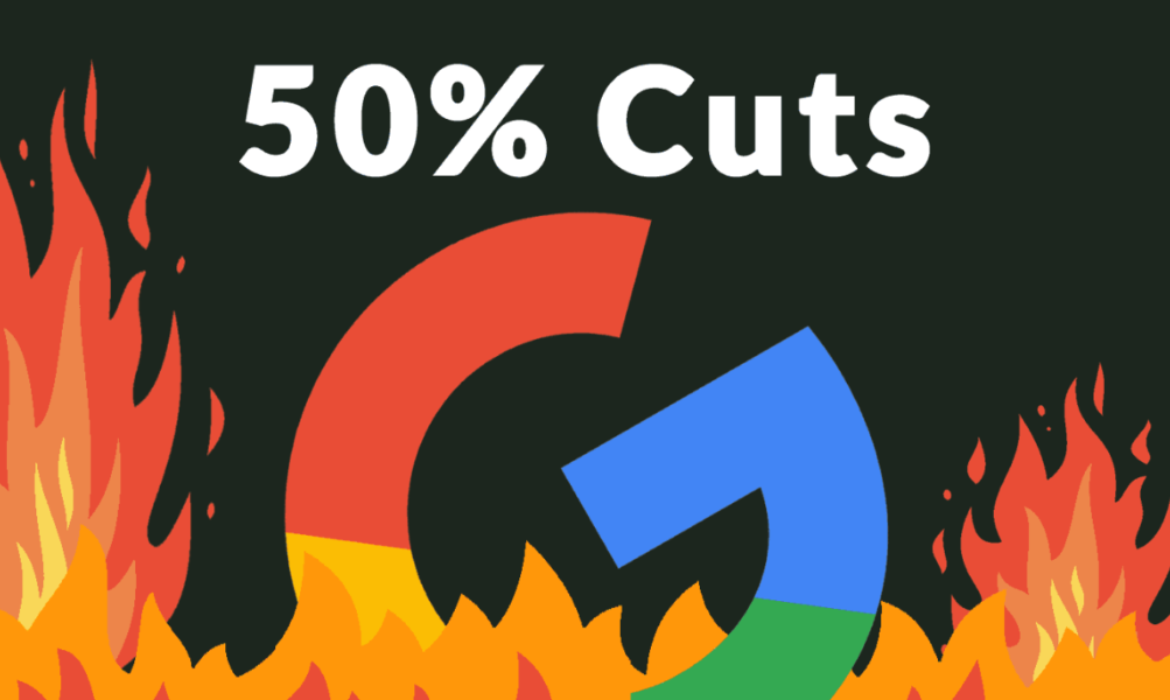Morgan Stanley Forecasts Australian Ad Spend To Fall By 9% In 5 Years
In a recent analysis by investment bank Morgan Stanley on Australian advertising, it forecasted that the domestic media share will shrink if it doesn’t innovate quickly. The domestic media ad spend was $10.4 billion in 2019 and will fall at an annual rate of 9% over the next five years. In a note to clients, analysts wrote,
“We think investors perpetually underestimate the global leakage of ad spend from Australia.”
A section of marketers holds a viewpoint that the ad spend with Google and Facebook has started to plateau and revenue is returning to the domestic traditional media. However, the analysts completely disagree with this market viewpoint and highlighted numbers that suggest that there can be an acceleration post-COVID 19.
The Australian advertising market has shown little growth over the years – around 1.9 % a year. Also, the financial statements filed with corporate regulator ASIC reveals that over the last three years, global media/tech players’ revenues in Australia increased by roughly 20%.
The global ad tech players like Google, Facebook, Snap, and Twitter as well as emerging players like TikTok continue to take an increase in share in the Australian consumer’s time especially the younger demographics. They will have a larger share in digital media spend in Australia post-pandemic as well.

Image Credit: Ad news
Morgan Stanley forecasts 2.1 % revenue to fall of global tech players in Australia in the current downturn but not as severe as that of domestic media- radio, outdoor, print, and TV. On the other side, the revenue of the domestic media players will see a drop of steep 22.1%
However, the analysts believe that global players will lift their market share in advertising in Australia. For instance, Google Australia’s gross revenue was $4.8 billion in 2019. Morgan Stanley estimates a 4% decline this year owing to the ad industry slow down but expects to rise 13% year-on-year growth up to 4 years to reach between $7 billion and $8 billion in ad revenue a year in 2024.
Analysts say,
“Eventually, COVID-19 will be over and there will be a cyclical recovery in the Australian economy, and a bounce-back in the advertising cycle. ”
He further added that the market will be disappointed in expecting a rise in domestic media earnings.
“Even post COVID-19, when the overall advertising market stabilizes and starts to improve, we think the magnitude of the recovery will disappoint investors.”
“Our point of difference is our thesis … that if the global tech players continue to grow revenue double digits in Australia, but the total pool of ad revenues is only increasing 2% to 3% p.a., there is necessarily a ‘crowding out’ of ad spend left for domestic media companies to pursue.”
The markets underestimate the risks to ad revenue, profit margins, and ROCE(Return on equity) from a 5-year long term view. The main reason for the global tech giants growing faster than local media is structural changes. ‘Necessity is the mother of invention’ and businesses that continue with traditional media platforms for advertising need to change and rethink their strategy.
The analysts in the report mentioned that
“The consistent industry feedback we receive is the current challenges facing large, small and medium-sized businesses across Australia is prompting leadership and management teams to think harder and deeper about becoming more digital,”
Many SMEs have tried marketing on digital platforms for the first time during COVID 19 as consumer behavior and time spent has changed and accelerated towards digital/online/mobile media. It is expected that the same pivot will exist with the advertising budgets.
Unfortunately, the crowding of traditional media- radio, outdoor, TV, print – is set to be more intense.

Image Credit: Adnews
Morgan Stanley continues to have an underweight rating for ASX media companies like Seven West Media, WPP AUNZ, oOh! media and Southern Cross but Nine Entertainment.
Nine Entertainment (NEC)is an exception due to its various revenue sources like digital subscription, streaming, and digital advertising assets. Analysts believe that some Australian media companies have the potential to reinvent themselves and develop digital businesses and NEC has demonstrated the ability for such a reinvention.
The global players may face a threat if they fail to innovate themselves and will lose their consumer share and ad share.
Where Do These Global Companies Stand At The End Of Q1: Performance, Insights, And Statistics
We bring you insights and earning calls on various media companies, publishers, agencies, brands, and tech companies performing on a quarterly basis. The iteration focuses on media companies’ financial performance in the 2020 first quarter and taps all the vital data.
Q1 2020 earnings and performance
Though the waters are choppy ahead, we are optimistic that the worst is behind us and have learned to live with the new normal. Consumer habits are changing and the future is more accelerated towards the digital economy. The media landscape has changed especially the TV front and the focus is on opening businesses again with advertising driving the demand.
Q2 Outlook
Q2 advertising for publishers is estimated to be significantly down as much as 25-30% Y-o-Y and for some even 50-55% down. Few companies like Facebook, Snap, Dotdash expects Q2 revenue to be flat or slightly up Y-o-Y. Here are a few key points to consider:
- Google revenue declines by 15% year- over -year, though search activity increased. Advertising spends decreased due to coronavirus recession. However, other advertising mediums are growing like connected TV, ads in video games, or ads in video conferencing.
- International TV ad sales are down by 30-35% Y-o-Y whereas programmatic revenue decreased by 40-45%.
- Performance ads are down year-over-year and demand from industries like restaurants, travel, retail, auto, and luxury has declined.
- Some advertisers seek opportunities and increase spending in financial services, insurance, telecom, technology, streaming services, and app downloads. Gaming and streaming are gaining a strong foothold and permanently taking a share of our time and wallets.
- CPM’s down by almost 50% giving an advantage to advertisers for huge bargains. New and existing advertisers are looking to acquire new customers at a lifetime low value.
- With no new live events expected on TV till September/October, it will boost the growth of CTV.
- Attribution for marketers is easy as most sales are online than in-store. The animation is expected to be robust in Q3 and Q4.
- 90-95% workforce for media companies are operating from home and CMO’s can justify spending using data-driven advertising with trackable ROAS.
Let’s take a look at the financial report card of the global giants.
The Trade Desk
The opening remarks from the trade desks on the present scenario are as follows – Programmatic’s greatest feature is ‘Agility’. One can easily start and stop the programmatic campaigns, unlike linear television. Early April witnesses advertisers stopped/pause ad spend in certain verticals especially travel and remained active in health, technology, games, home, and garden.
However, by mid-April year-over-year spend decline stabilized, and as the month progressed things started improving. Advertisers were trying to adapt to the present environment. For instance, restaurants changed their messaging to “We are open” or “We deliver.” Consumer products focused on pantry loading and travel companies planned to waive off cancellation fees for bookings. Basically, advertisers started to strategize on how to run businesses on the other side of the pandemic. Now, every company is trying to work out an advertising strategy to connect to consumers and gain share once the economy gets going.
CTV is a clear winner as linear TV’s life is shortened. Unlike traditional TV ads investment where brands and agencies commit billions of dollars without knowing the content and audience, they have the freedom to be more deliberate, liberal, and agile on CTV.
 Roku:
Roku:
- Pandemic has accelerated the shift to streaming by viewers due to excellent content and value.
- In the short term, the video advertising business has slowed down due to budget cuts and low spending by advertisers.
- In the streaming business, active accounts grew roughly 38% Y-o-Y with an increase in new accounts of more than 70% Y-o-Y.
- Streaming hours grew roughly 80% in April and the increase in streaming hours per account is approximately 30%.
- It is estimated that ad business will grow at a slower pace and gross profit margin will be lower than expected for the year.
- The behavioral changes of TV ad buyers are positive in the long-term and more people are expected to stay home to control spending in the light of economic hardships and the shift to streaming business will grow further.
 Google:
Google:
- In March there was a sudden slowdown in ad revenues owing to COVID 19 and lockdown orders. The first two months of Q1 reflected strong growth. Google search and other advertising revenues generated $24.5 billion, up 9% Y-o-Y.
- After the 2008 crisis, the Google search can be adjusted easily-quickly turn-off and back on which is cost-effective and ROI based. At the inception of the coronavirus crisis, users’ interest was more for information on the virus and non-commercial topics providing less opportunity for monetization.
- Q2 looks difficult for the advertising business.
- YouTube advertising revenues were up 33% year-on-year to $4 billion however there were different performance trajectories for direct response and brand advertising.
- Direct response continued to grow throughout the quarter but brand advertising growth grew for the first two months of the quarter and declined in March. This resulted in the slowdown of Youtube ad revenues by the end of March.
- Similarly, networking ad revenue was $5.2 billion, up 4%Y-o-Y for the first 2 months of the quarter, and declined in March in the low-double-digits year-on-year.

Spotify:
- Ads are a small part of the business, nearly 10% of the overall revenues. Therefore it is less impacted compared to other businesses.
- From a long term perspective, it will be an opportunity to move from linear to on-demand due to COVID 19 crisis.
- It is suspected that advertisers will move from pure reach to more measurable ad formats -mostly analog ad formats.
- The conjecture on advertising and consumption front is what is already happening of linear shifting to digital.
Learn more: Spotify Adds $1.7B To Market Cap In 23 Min Post A Deal With Joe Rogan, World’s Leading Podcaster.
![]()
Rubicon:
- The first half of April’s revenue was roughly 30% down until it showed signs of stabilizing in the second half.
- CTV continued to grow at a slower rate in April with a Y-o-Y increase of nearly 10%. Ad slot availability grew by roughly 25% compared to pre-COVID 19.
- Being an omnichannel SSP there has been diversity in ad categories and even more after the merger with Telaria. Certain verticals were highly impacted like travel in entertainment but e-commerce, technology, and direct-to-consumer were benefitted.
- Upfront deals are canceled and focus is shifted to spend from linear to the spot market that programmatic serves.
 Microsoft:
Microsoft:
- Reduction in ad spend affected Search and LinkedIn business and assumes that the advertising spend will not improve in Q2 as well.
- Search revenue ex-Tac increased by 1%.

Apple Advertising:
- The economic slowdown and uncertainty on business reopening have impacted the advertising business – which is the sum of App Store search ads, Apple news, and third party agreements on the advertising front.
- This slowdown and uncertain future will have a strong effect on the Service business for the June quarter.
 Verizon:
Verizon:
- Owing to the COVID-19 crisis, ad revenue declined by 10% in the second -half of March and the rate of decline only increases in April.
- Industry forecasts a fall of 20-30% in digital media and Verizon media results are likely to be similar.
- It also experienced a decline in advertising and search revenue due to hold back or cancellation of campaigns by advertisers and users searching for fewer commercial terms providing less opportunity for monetization.
- Finally, some staggering numbers were seen- 200% up on gaming, 40% up on video, and 10 times up on the collaboration tools. 800 million calls a day, is double the amount on Mother’s Day, the biggest day of the year.

Netflix:
- Increase in subscriber growth in March and is a pull forward for the rest of the year leading to an assumption that subs will be light in Q3 and Q4.
- Filming is stopped globally except Korea and Iceland.
- Customer services are fully restored with 2000+ agents working remotely.
- With the lockdown orders coming into effect in LA, animation production is up and working from home whereas the post-production of 200+ projects is in pipeline remotely.
- Series writers’ rooms are operating virtually.
- Netflix has invested in Open connect, a pioneering cache system that puts content library as close to members’ homes as possible. This enables ISP’s to run their network efficiently and at a lower cost. However, some countries networks may face issues due to the increasing usage of the internet.
 Omnicon
Omnicon
- The company doesn’t collect weekly revenue numbers by the agency and roll them up at the Omnicom group level.
- Q2 downfall is expected in double digits and year-on-year revenues will be down.
- The future is challenging but the company expects to get many of those people back as they move into the year ahead.
Learn more about the quarterly performance of other media companies: Financial Report Card Of The Global Giants And Industries In COVID-19
Advertisers Perception Survey: Publishers Positive About Policy Changes
Some publishers are constantly criticizing the changes made in Google ad policies. Although, according to Advertisers Perception Survey of the SSPs, the new policies don’t hurt the publishers in any practical manner.

Image Credit – adexchanger
The report included more than 150 digital ad sales and operational professionals. These websites include approximately 3 million visitors per month.
With Google ad policies switching to the first-price auction, nearly 4% of publishers claim that they are negatively impacted. Around 47% states that they see a positive change in business with the change in policies. Whereas, 43% states that it won’t change anything.
Similarly, Google ad policies changed the rules for unified pricing recently. A similar ratio of 4% of publishers saw negative impacts on business. 30% of publishers found the change appealing and experienced growth. Rest of publishers felt that the change won’t affect their business.
Advertiser Perceptions President and Chief Strategy Officer Kevin Mannion said: “Publishers tend to view with a white hat.” Publishers trust Google due to its innovative approach, end-to-end integration, and for the constant updates/access provided to the Adx demand pool.
Google ad managers demand is continuously increasing among its user. The reports of the third quarter from last year show the strengthening hold and leap in the position of Google in the market.
“Google is more dominant here than in any other ad tech category,” said Mannion.
Google ad manager and Amazon Publisher services compared on the bases of their fondness.
Almost 60% of publishers preferred Google while only 12% were in favour of Amazon.

Image credit -adexchanger.
The other preferred top 10 SSPs like OpenX, SpotX and Verizon media managed with a share of 3% to 6% publishers who think these solutions are the best.
When it came to the user database, Google Ad manager share was the largest at 81%. Around 46% claimed to be using Amazon Publisher Service. The other 14 SSPs have a portion of nearly 11% to 35% of the publishers who were reviewed.
Google locks up its spot of being the finest due to its technological progression. As per 78% of publishers, they pick Google due to “superior technology position.”
Since last year Google’s stature has increased among its publishers. Now, 90% of publishers think that Google Ad manager is a better solution, as compared to 79% last year.
Preference of SSPs among large to medium publishers.
Publishers are differentiated among large, medium and small publishers based on their user database. Google Ad Manager and Amazon Publisher services are preferred among all scale of publishers.
Publishers get compared on the basis of large and medium publishers. The results of the survey made by Advertiser Perceptions of SSPs highlighted some important influential factors.
To understand the working of stacking, and ranking of SSPs based on their popularity, let us take an example of Index exchange.
Index Exchange ranked third among all users. Nearly, 44% of large publishers are using it. Being popular with 44% of large scale publishers is extremely wonderful. However, it’s less preferable among small publishers(14%).
This leads Index Exchange to the third position of the stack.
Verizon media was ranked seventh among the large publishers, whereas it was ranked fourth among the small publishers.
There are other factors that can decide the ranking of SSPs.
Small publishers are those who have less than 20 million unique visitors. Small publishers use nearly 4 SSPs. However, any large publisher with more than 20 million unique visitors uses 6 SSPs.

Image credit – adexchanger.
Rebranding product can cost the user database.
Rebranding the product is not easy, as brands develop with time slowly earning their status in the market.
An example of a brand losing its popularity with rebranding can be seen by observing the decision of Verizon Media. Verizon Media rebranding Oath Media cost a massive loss of user database.
Similarly, AppNexus rebranding itself to Xandr Monetize has seen a tremendous loss of publishers. From 43% it came down to 19%.
Mansion said, “Verizon media is on a rebound.” People perception towards it is improving. There is a net 10 to 20% increase in its market leadership and its technology vision respectively.
OpenX also fell 11 points for its technical superiority. This year OpenX has lost nearly half of its users who thought that it is a market leader. The percentage decreased to just 36%. OpenX is the third most likeable solution according to the report.
This has nothing to do with the factor of rebranding.
Pre-pandemic point of view.
This survey took place in February, which was the starting of COVID pandemic.
During the epidemic users demands from the SSPs for the innovation has increased. The market is reshaping itself, publishers are appealing to SSPs to step up and portray cleaner advertising.
Publishers want to SSPs to work on the following factors:
- Bad ad troubleshooting – 64% of publishers view this as crucial.
- Prevention of counter-fitted inventory via ads -64% considered this crucial.
- Blocking of fraudulent traffic- 68% publisher demands it as a crucial step.
“Publishers tell us that they aim at zero tolerance for fraud and bad ads,” Mannion said. “They want their SSPs to be their trusted partners toward that end.”
Apple Rises On The Frustration Of Publishers On Apple News.
For several months Apple is seeking participation from publishers in its premium program. Apple initiated this project a year ago aiming to create audio files of the stories published on its News+ platform. Apple thinks that this will be a great leap in the future of news reading. Nearly four separate publishers have listened to this approach now.
Apple declared that it’s going to handle the production costs. In a statement, Apple said that they will compensate the publishers of audio content in the same way they compensate their Apple News+ publishers for their written content. According to sources Apple pays around 50 % of the revenue amount to publishers which users spend in the duration of 30-days on its Apple News+ platform.
With its approach of audio content on Apple News+ Apple fancied to stay trending in the innovation market. The reason for the adoption of this format is a profound influence by other service providers. Many private websites started publishing podcasts(a digital audio file). It’s the new trend taking over! Therefore, you can imagine why Apple wants it so severely.
This decision received miscellaneous reviews from publishers.
Associates from publishers, who are in conversation with Apple for this project stated that Apple seeks permission to initially choose files for conversion. Most likely, this will be done as per the user’s interest.
They further stated that publishers are in conversation to handle any other obstruction that may subvert the deal. One of the issues which arise relates to the freelancer writers’ articles. Freelance writers compose many articles written in Apple News+. These articles forbid third-party re-usage to users similar to Apple.
Apple is making a huge effort to make this deal happen. Apple wants to lift maximum responsibility to make sure other participants don’t strive, still, Apple faces criticism on several fronts.
Many worry about the compensation, and some just think that it’s not feasible; as listening to audio takes more time than reading an article.
In a statement, an associate from the publication involved in the conversation with Apple stated, he heard Apple stating the following:
“All the publishers who were part of Texture are going to get into an arms race.”
No declaration for the release of the audio files can be provided.
Even Apple has declined to release any official statements regarding this!
It may not be the best time for Apple to fulfill the desire of releasing audio stories for its Apple News+. Many publishers have registered dissatisfaction regarding the amount of money they make using Apple News. In a quarterly earnings call, Tim Cook, CEO of Apple announced that they have an increase in their active monthly user. The number has increased to 125 million, which is indeed a wonderful number of audiences. Last year the number of users registered was 90 million. By these reports, you can calculate the tremendous growth in the user base of Apple News+.
With a huge increase in audience, publishers should be getting 50% share of users’ monthly expenses, still, why are publishers showing disappointment with Apple regarding money?
The answer to this could be the Last official announcement made by Apple regarding its users of Apple News, which was 48 hours after the product was launched. In this announcement, Apple stated that they have achieved 200,000 subscriptions in just 48 hours. According to a publisher, they just receive $20,000/month, they affirmed this while talking to a channel.
Several publishers shared similar experiences, describing the payment process of Apple News as “horrendous.”
As per the Alliance for Audited Media, publishers can count every download of their issue as a circulation number. The reason for this implies due to the media and ads which remain the same in both the versions.
Increasing speculations, Bloomberg in February reported, Liz Schimel, who was leading the News platform of apple resigned from his job without even completing a year with the organization.
No doubt that the demand for audio formatted content is increasing. Today, SpokenLayer is a star name in producing and distributing audio contents. They stated that their client base has gone wide in just four years. Before, the numbers neared Zero and now they are distributing Audio content over 12 distinct platforms.
Giant techs like Amazon, Google, and Spotify are already leading the audio content game in diverse genres. In some cases, publishers are getting funds directly from Google for composing their audio content.
Privacy Sandbox By Google Shows Backdoor To The Third-Party Cookies.
For the last two years, Google has been working to remove third-party cookies from it’s Google Chrome browser. Moving forward with this aspiration Google recently announced testing some of its “Privacy Sandbox” proposals. Google wants to test the algorithm with other exchanges and demand-side platforms. It seeks to examine the process of implementation and ways to deliver a better-guarded program to its users. Google will also make sure that this solution works inside the policies of advertising auctions.
It was in late April when Google made its big announcement. Google revealed its intentions on the “Bit Request Signal Experiment.” The announcement was made by a post on GitHub, which is a collaboration stage for software developers. Google invited advertising tech firms to take part in the testing so that they can receive some real-time algorithm test results. They affirmed the uncertainty of dates for live testing of Privacy Sandbox. They still wanted ad firms to respond to them, affirming if they are enthusiastic to help.
Soon speculations and news started flooding the tech industry!
“This is an early-stage concept and we don’t have more details to share right now, We plan to publish updates and progres s in GitHub as part of the process.”, quoted a Google spokesperson on GitHub.
Google team declared discontinuing support for the third-party cookies in January. Providing an explanation stating that they want to encourage publishers, advertising companies, and other providers of browsers to come up with a new set of rules which are user-privacy centric and follow open measures for the web.
Privacy Sandbox was launched in August, the idea was to innovate the ad recurrence and behavioral advertising. Aimed to help them work on the web without using third-party cookies. In a mega event with, 163 giant tech organizations like Apple, Facebook, Axel Springer, The Washington Post, Criteo, The Trade Desk, and even Google. All are requested to share their views via. World Wide Web Consortium or GitHub to help the project succeed.
A member from the “RTB group,” from Google posted on GitHub. Sharing insights on the bigger picture and a bit clear version of the cookieless browsing. Explaining the process, he talked about how user targeting will be done. He introduced the machine-learning algorithm known as “Federated Learning of Cohorts” which will be used in the working of cookieless browsing. Further, he explained that the algorithm will group people into different segments of the audience by understanding their behavior, likely by their browsing history.
He stated that this will improve the privacy of the users. This algorithm isn’t designed to target any user in particular. Instead, it will target a group of audiences. This group is also be known as “FloCs”. The algorithm is designed to group people on the basis of their similar interests.
Google posted on GitHub stating:
“Exchanges could offer a uniform RTB interface for aggregated audience targeting to bidders regardless of the data source,”
Another post that surfaced on GitHub from Google stated the following:
“Exchanges can explore the separation between contextual and user interest components in the RTB data flow, along with hosting the ad selection logic that needs access to both components (for instance, brand safety checks for a product retargeting ad) in a sandbox.”
Google provides an exchange with options to set a “Privacy budget.” According to the budget, an exchange can request a particular unit of data. If the data limit will surpass the budget, it will lead to an error, or as a consequence the data will be preserved in greater privacy. Presenting an option for user privacy, it can easily be determined that how much data needs to be revealed?
Google is beseeching bidders and exchanges to run real-world small scale “RTB” experiments. This will help them to test the algorithm real-time bases and with live scenarios.
Tom Kershaw, chief technology officer of Rubicon Project and a member of the World Wide Web Consortium’s Improving Web Advertising Business Group, said that they welcome the proposals. But the project is in the exceptionally fundamental stage.
Another statement came from Kershaw, chairman of the Prebid.org ad tech industry organization stating that “These are experiments with a capital E, We support these initiatives but there is not a single proposal on the table close to being adoptable right now. A ton of work needs to be done.”
Another member of the Improving Web Advertising Business Group states that the project is in its evolution pipeline and it’s going to take a long time to develop a technical standard.
He also added “It’s great, given the implications of what’s at stake, that the advertising arm of Google is attempting to implement what the browser arm is doing. It’s a really important step in the process.”
Every 2020 Google SERP Feature Explained: A Visual Guide
How many searches would happen to Google every minute, month, or year? Have you wondered? Finally, the company has released updated data.
Every second, Google processes 63,000 search queries.
Every year, Google has 2 trillion searches.
A caveat, Keep ‘at least’ in mind while reading the figures.
This shows we are so obligated to the power of Google search behemoth and its mystical computing. Google holds nearly 72% market share of search engines.
Why it matters
Companies spend time and effort to develop fantastic content, great titles, meta descriptions, and permalink to rank high on the search and drive conversions. However, a key strategy is often missed- to capitalize and enhance their entry on Google SERP (Search Engine Result Page).
Incorporate the rich snippets into your online stores, websites, blogs, and more
SERP is the way
Google Search engine pages are now accurate, personalized, relevant, dynamic, and helpful. Using structured data, there are many visual enhancements made to the search engine result page which helps you to find the required information. It is essential to know the enhancements as indexability and site optimization has an impact on organic rankings.
Take a look at the enhancements and characteristics of each one:
- Direct Answer Box with short, rapid answers, lists, tables, or carousels may have an image to enhance it.
- Rich Snippet is the additional line of context below traditional SERP and is provided by the websites with price, ratings, etc to enhance the search engine result page.
- Rich Cards for mobile users.
- Knowledge Graphs shows up on the right of a SERP displaying curated images and information about the search.
- Knowledge Panels shows up to on the right of a SERP displaying curated images, information, directions specific to a brand or business.
- Local Pack is an integral part of the local search results with business information, reviews, and location and plays a key role in customer’s decision making.
- People also ask provides related questions and answers to the original query.
- Image Pack is a horizontal carousel of queries related to images or photos.
- Site Links is an expanded pack of links within popular sites. It may also include a site search field that is particular to the internal search mechanism.
- Twitter displays a carousel of tweets with clickable images and links.
- Newsbox: is a carousel of trending, top stories, or breaking news related to the query.
Why Use Rich snippets
By structuring the data and following Schema standards, you can utilize rich snippets and improve your overall visibility on the search engine as it educates the algorithms on the information within the page.
If your company or marketing team is not taking advantage of rich snippets then time to change strategy and develop a new solution. Rich snippets help you enhance your search, increase click-through rates, and engagement. If your company or marketing team is not taking advantage of rich snippets then time to change strategy and develop a new solution. Rich snippets help you enhance your search, increase click-through rates, and engagement.
The Big Picture
This infographic from Brafton, A Visual Guide to Every Google SERP Feature: Snippets, Panels, Paid Ads and More, provides insight on how rich snippets and structured data look like on a search engine results page and why it appears.

Facebook Post Strong Earnings in Q1’20, Exceeds Analysts Projections
Its earnings season and Facebook has some relatively good news on that for the investors. It has impressively beaten Wall Street expectations on revenue and earning per share (EPS). Facebook ad revenue grew by 17% Y-o-Y despite the instability in the digital ad market due to COVID-19.

Image Credit: Facebook
Why does it matter?
Interestingly, Facebook was able to beat top and bottom-line revenue expectations amid the coronavirus crisis showing how its business is strong and growing. However, the company didn’t provide specific revenue guidance for Q2 due to the ongoing uncertainty but offered a snapshot on the revenues of upcoming quarters.
- Meanwhile, Facebook said that the current rise in engagement will continue but the usage will come down once the stay-at-home orders are lifted.
- The digital advertising industry has taken a hard hit due to shelter-at-home orders globally. Facebook said in a statement, “We experienced a significant reduction in the demand for advertising, as well as a related decline in the pricing of our ads, over the last three weeks of the first quarter of 2020.”
Let’s talk numbers
- Earning per share (EPS): $1.71 vs. $1.75 per share forecast by Refinitiv
- Revenue: $17.74 billion vs. $17.41 billion forecast by Refinitiv
- Daily active users (DAUs): 1.73 billion

Image Credit: Facebook
- Monthly active users (MAUs): 2.6 billion
- Family Monthly Active people (MAP): 2.99 billion monthly users across its family of apps. This metric helps to measure Facebook’s total user base across its main app, Instagram, Messenger, and WhatsApp.
- The average revenue per user (ARPU): $6.95
- Other revenue: $297 million which is driven by sales of VR headset ‘Oculus.’
- Cash and cash equivalents: $60.29 billion
What lies ahead?
- Facebook is the third internet company that posted strong Q1 results after Snapchat and Google despite the hindrances in the digital ad market. This shows big internet companies will keep dominating the advertising ecosystem due to the pandemic.
- CCS Insight chief operating officer Martin Garner believes the impact of the virus will lead companies to use digital services from advertising to collaboration.
“………..Although Google and Facebook will take a hit from Covid-19, we expect them to be leading indicators of recovery, as digital advertising and other services show early growth in economies getting back to normal.”
Google Cuts Marketing Budgets by 50%, Freezes Hiring.
Key Points
- Budget cuts and hiring freezes across marketing and across Google.
- An internal document reveals Google is cutting its marketing budgets by as much as 50 % for the second half of 2020.
- The marketing budget cuts may be a way to combat reduced advertising earnings in the wake of coronavirus.
- The development comes in less than a week from where Google is scheduled to discuss Q1 2020 results on 28th April.
Google is doing what other big tech companies are or will be doing soon to mitigate the coronavirus impact – cutting marketing budgets. An email viewed by CNBC, sent to the marketing employees this week was about budget cuts and a new hiring freeze for full-time and contract employees.
The e-mail stated:
There are budget cuts and hiring freezes happening across marketing and across Google…We, along with the rest of marketing, have been asked to cut our budget by about half for H2.
In 2019, Google spent $18.46 bn which includes employee compensation. One important area that required advertising was Cloud, as it competes with Amazon and Microsoft by hiring more sales representatives.it is unclear how such areas will be affected that need wide consumer reach.
However, Google confirmed that some areas’ budgets are being cut but not every area will be impacted as it adjusts plans.
A company spokesperson said in an emailed statement to CNBC,
As we outlined last week, we are re-evaluating the pace of our investment plans for the remainder of 2020 and will focus on a select number of important marketing efforts….We continue to have a robust marketing budget, particularly in digital, in many business areas.
Sundar Pichai, CEO in his memo last week stated,
The clear lesson from 2008 is that preparing early is key to weathering the storm and emerging in a position to continue long-term growth…We are reevaluating the pace of our investment plans for the remainder of 2020. That starts with taking a more critical look at the pace of hiring for the rest of the year.
…we continue to invest, but will be recalibrating the focus and pace of our investments in areas like data centers and machines, and non-business essential marketing and travel.
Sundar’s announcement emphasized that the company will not cut back in areas where consumers needed Google’s support for their growth and success. It will also continue with digital advertising which is in line with the stay at home audience.
Travel advertising earnings plummets:
Recently, a search marketer who knows travel advertising well tweeted the collapse of travel-related advertising and one of the contributing factors to a negative impact on the earnings.
When nearly 10% of your business is as a performance marketing supplier to Expedia and Priceline, and they stop advertising, the knock on effects are strong: https://t.co/TKNFl3YgOs
— Martin MacDonald 🏴🇪🇸🇺🇸🇧🇧 (@searchmartin) April 23, 2020
Following the news, Google shares had dropped nearly 2%.
Rejoice Small Retailers: Selling Products is Now Free On Google Shopping
The retail sector has been facing difficult times over the years and it has intensified during the coronavirus pandemic. In the wake of the current challenging situation, Google announced from now the listings of products will be free in the Google Shopping Tab in search results.
Explaining this decision, Bill Ready, President of Commerce at Google cites the fact that it is difficult for struggling businesses to pay for Google shopping listings at this time.
“And as consumers increasingly shop online, they’re searching not just for essentials but also things like toys, apparel, and home goods.
While this presents an opportunity for struggling businesses to reconnect with consumers, many cannot afford to do so at scale.”
Before this announcement, the merchants used to pay Google whenever a customer visited their website through Google product listing but not anymore. Google made this attempt to expand in e-commerce to compete with Amazon Inc as it drives more consumers online due to the COVID-19 outbreak.
Launching Free Listings initiative
Google’s parent company, Alphabet Inc will enable merchants to list on Google Shopping service free of cost. Google witnesses hundreds of millions of shopping searches on its platform every day.
This change will take effect in the U.S search results by the end of April and aim to expand globally by the end of the year. The rollout will begin next week where search results on the Google shopping tab will consist primarily of free product listings.

Image Credit: Search Engine Journal

Image Credit: Search Engine Journal
With physical stores temporary shut doors, digital e-commerce is the lifeline for small and struggling retailers. The company states that many retailers have the items in stock and ready to ship the products that people need but are not easily discoverable online. That is where Google is trying to bridge the gap and is looking to address with this move.
- What’s in it for Retailers?
Free exposure to reach millions of potential customers that visit Google every day for their shopping needs.
- What’s in it for Shoppers?
This will ensure the discovery of more products and more stores via Google’s Shopping Tab. Existing members of Merchant Center and Shopping ads can start directly with their free listing. For new users, Google is trying to streamline the onboarding pretty soon.
A Merchant Center account is compulsory to publish free product listing.
- What’s in it for Advertisers?
Paid campaigns can now be augmented with free listings.
New Partnership with PayPal
Google has kickstarted with new PayPal to allow merchants to link their accounts and speed up the onboarding process.
PayPal joins the existing partners including, Spotify, Woo Commerce, and Big Commerce.
Other Key Changes
Google specifically states that Google Shopping will consist “primarily” of free listings. This means they are still accepting paid listings and will receive notable placement at the top of the Google shopping tab.
The attempt of free listing can affect advertising revenue but this decision is made from a long term perspective as more merchants will start using Google Shopping.
Google free listing will show up in the less popular search tab, compared to the Product ads that will appear on the main page.
Solutions in the time of crisis are not about easy or fast but how to provide relief to struggling businesses and lay groundwork for a better and healthier retail ecosystem.
Google Withhold Programmatic Data, Advertisers Pulls Back Ad Spend
Advertisers around the world are looking for more transparency and data into their programmatic buys from their ad tech vendors. However, one hold out is Google in the negotiation, a dominant player in the ad tech world.
Recently, a US-based retailer decided to not buy ads from the world’s largest online ad Digimarketplace Google Ad Exchange. They wanted granular log-level data about the bids won or lost by them over a festive period last year however Google refused. So, the advertiser spent dollars on the other programmatic platforms who were willing to share data and offer discounts.
As quoted by Digiday, the Head of Display at the U.S based retailer said,
“Google’s ad exchange didn’t make the list primarily because they’re not willing to give us any transparency or data around not only their take rates on our media sped but also anything we could already pull from our demand-side platform.”
Advertisers are unaware of how much money is Google making from the bids. Google shares aggregated information rather than impression-level data CPMs (Cost Per 1000 Impressions). Therefore, many advertisers are now looking for an alternative that gives them better CPMs and complete transparency over the data.
Some of the US-based advertisers are reducing, if not completely, stopping their spending on Google’s platform. Procter and Gamble’s marketers are one of them who are in the process of reducing the amount of money they spend on Google’s Ad Exchange, as explained by ad tech executives to DigiDay. He further expanded on the point, that it is unlikely that P&G will pull of the media dollars from Google’ s Ad Exchange. After all, Google holds power over auctions which means it can keep prices lower for advertisers and can perform better than other marketplaces.
For now, a handful of the larger programmatic advertisers are weighing their options on how much money to pull off from the Google marketplace. However, companies that have achieved better CPMs with other publishers have stopped buying ads completely from Google. On the other hand, some big programmatic spenders are pushing Google to share more granular data or else they will seek other ad exchanges.
“We’re seeing Google’s ad exchange become slightly less of the total pie,” said Jay Friedman, president at programmatic agency Goodway Group to DigiDay.
”I don’t have a percentage but it’s less but not significant.”, he further added.
However, it seems clear that Google would rather loose a few smart programmatic advertisers to protect the share of a multitude of other advertisers that buy Ads regardless of the price that they are paying.
Over the last decade, Google’s auction model has media buyers in a bind as on one hand, Google gave advertisers audience targeting specific data and a better chance of winning the Ads auction on its own platform rather than on the rival platform. Whereas, on the other hand, those benefits were only for those advertisers who used Google’s ad tech products to buy its inventory. Some advertisers stopped short over the setup but many believed that working on Google’s platform has more advantages and limited downsides.
The rival ad tech vendors, also known as Supply-side platforms soon turned the tide in their favor using header bidding to bid every impression. They started the first-price auction where the advertiser could bid exactly what he is willing to pay unlike in Google’s ad exchange where the price an advertiser pay is slightly higher than the bid they made.
Eventually, Google caved in and changed its policy in 2019 and introducing unified auction that would put Google in the level playing field with the rival platforms like Pubmatic and Rubicon Project that give advertisers access to granular data as per their need. Data from rival platforms is helping advertisers to chart the best course for a low-fee route to CPMs in this highly competitive market. In these auctions, there are chances of the same publisher inventory is made available through multiple ad tech vendors at the same time leading to advertisers paying more for inventory. To avoid this, advertisers are using the supply-path optimization technique to broker better programmatic deals, many of which are dependant on the data they receive from the vendors.











